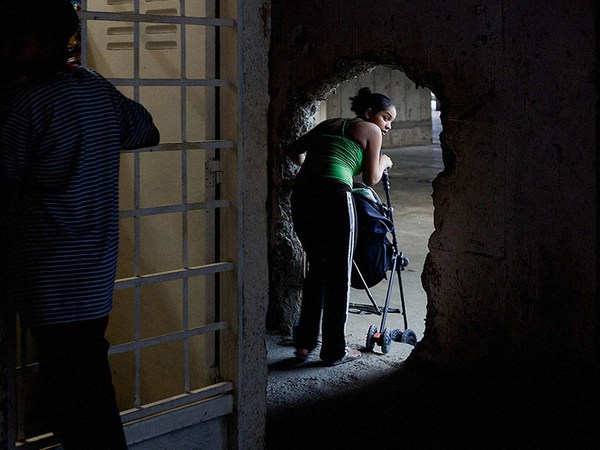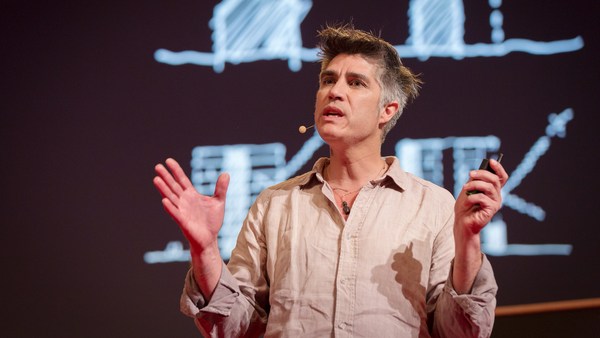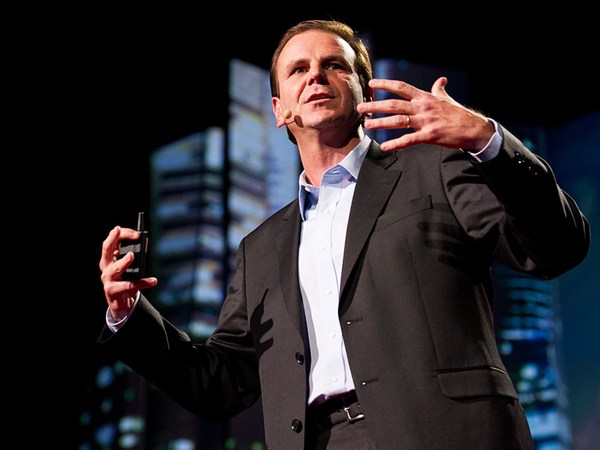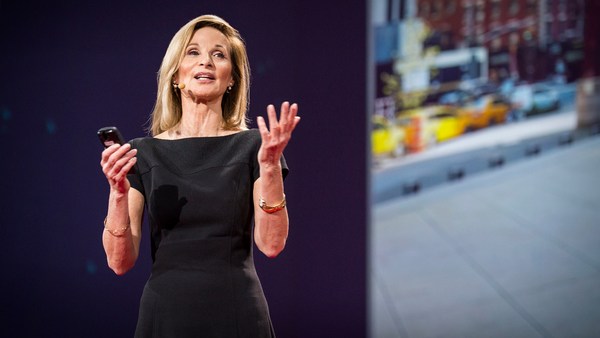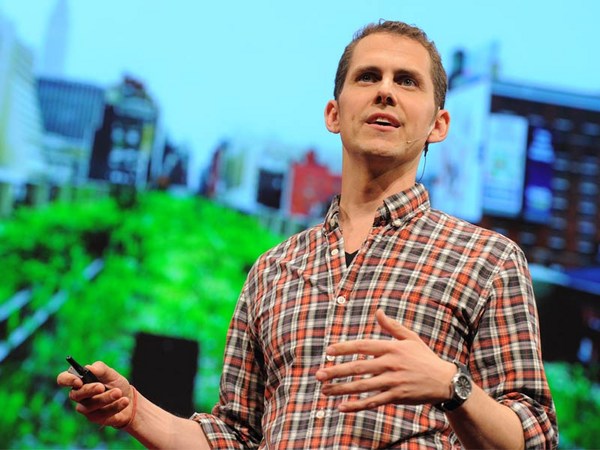Let me show you some images of what I consider to be the cities of tomorrow. So, that's Kibera, the largest squatter community in Nairobi. This is the squatter community in Sanjay Gandhi National Park in Bombay, India, what's called Mumbai these days. This is Hosinia, the largest and most urbanized favela in Rio de Janeiro. And this is Sultanbelyi, which is one of the largest squatter communities in Istanbul. They are what I consider to be the cities of tomorrow, the new urban world.
Now, why do I say that? To tell you about that I have to talk about this fellow here, his name is Julius. And I met Julius the last week that I was living in Kibera. So, I had been there almost three months, and I was touring around the city going to different squatter areas and Julius was tagging along, and he was bug eyed and at certain points we were walking around, he grabbed my hand for support, which is something most Kenyans would never consider doing. They're very polite and they don't get so forward so quickly. And I found out later that it was Julius' first day in Nairobi, and he's one of many.
So, close to 200,000 people a day migrate from the rural to the urban areas. That's, and I'm going to be fair to the statisticians who talked this morning, not almost 1.5 million people a week, but almost 1.4 million people a week but I'm a journalist, and we exaggerate, so almost 1.5 million people a week, close to 70 million people a year. And if you do the math, that's 130 people every minute. So, that'll be -- in the 18 minutes that I'm given to talk here, between two and three thousand people will have journeyed to the cities. And here are the statistics. Today -- a billion squatters, one in six people on the planet. 2030 -- two billion squatters, one in four people on the planet. And the estimate is that in 2050, there'll be three billion squatters, better than one in three people on earth. So, these are the cities of the future, and we have to engage them.
And I was thinking this morning of the good life, and before I show you the rest of my presentation, I'm going to violate TED rules here, and I'm going to read you something from my book as quickly as I can. Because I think it says something about reversing our perception of what we think the good life is.
So -- "The hut was made of corrugated metal, set on a concrete pad. It was a 10 by 10 cell. Armstrong O'Brian, Jr. shared it with three other men. Armstrong and his friends had no water -- they bought it from a nearby tap owner -- no toilet -- the families in this compound shared a single pit-latrine -- and no sewers or sanitation. They did have electricity, but it was illegal service tapped from someone else's wires, and could only power one feeble bulb. This was Southland, a small shanty community on the western side of Nairobi, Kenya. But it could've been anywhere in the city, because more than half the city of Nairobi lives like this. 1.5 million people stuffed into mud or metal huts with no services, no toilets, no rights.
"Armstrong explained the brutal reality of their situation: they paid 1,500 shillings in rent, about 20 bucks a month, a relatively high price for a Kenyan shantytown, and they could not afford to be late with the money. 'In case you owe one month, the landlord will come with his henchmen and bundle you out. He will confiscate your things,' Armstrong said. 'Not one month, one day,' his roommate Hilary Kibagendi Onsomu, who was cooking ugali, the spongy white cornmeal concoction that is the staple food in the country, cut into the conversation. They called their landlord a Wabenzi, meaning that he is a person who has enough money to drive a Mercedes-Benz. Hilary served the ugali with a fry of meat and tomatoes; the sun slammed down on the thin steel roof; and we perspired as we ate.
"After we finished, Armstrong straightened his tie, put on a wool sports jacket, and we headed out into the glare. Outside a mound of garbage formed the border between Southland and the adjacent legal neighborhood of Langata. It was perhaps eight feet tall, 40 feet long, and 10 feet wide. And it was set in a wider watery ooze. As we passed, two boys were climbing the mount Kenya of trash. They couldn't have been more than five or six years old. They were barefoot, and with each step their toes sank into the muck sending hundreds of flies scattering from the rancid pile. I thought they might be playing King of the Hill, but I was wrong. Once atop the pile, one of the boys lowered his shorts, squatted, and defecated. The flies buzzed hungrily around his legs. When 20 families -- 100 people or so -- share a single latrine, a boy pooping on a garbage pile is perhaps no big thing. But it stood in jarring contrast to something Armstrong had said as we were eating -- that he treasured the quality of life in his neighborhood.
"For Armstrong, Southland wasn't constrained by its material conditions. Instead, the human spirit radiated out from the metal walls and garbage heaps to offer something no legal neighborhood could: freedom. 'This place is very addictive,' he had said. 'It's a simple life, but nobody is restricting you. Nobody is controlling what you do. Once you have stayed here, you cannot go back.' He meant back beyond that mountain of trash, back in the legal city, of legal buildings, with legal leases and legal rights. 'Once you have stayed here,' he said, 'you can stay for the rest of your life.'"
So, he has hope, and this is where these communities start.
This is perhaps the most primitive shanty that you can find in Kibera, little more than a stick-and-mud hut next to a garbage heap. This is getting ready for the monsoon in Bombay, India. This is home improvement: putting plastic tarps on your roof.
This is in Rio de Janeiro, and it's getting a bit better, right? We're seeing scavenged terra cotta tile and little pieces of signs, and plaster over the brick, some color, and this is Sulay Montakaya's house in Sultanbelyi, and it's getting even better. He's got a fence; he scavenged a door; he's got new tile on the roof.
And then you get Rocinha and you can see that it's getting even better. The buildings here are multi-story. They develop -- you can see on the far right one where it seems to just stack on top of each other, room, after room, after room. And what people do is they develop their home on one or two stories, and they sell their loggia or roof rights, and someone else builds on top of their building, and then that person sells the roof rights, and someone else builds on top of their building. All of these buildings are made out of reinforced concrete and brick.
And then you get Sultanbelyi, in Turkey, where it's even built to a higher level of design. The crud in the front is mattress stuffing, and you see that all over Turkey. People dry out or air out their mattress stuffing on their roofs. But the green building, on behind, you can see that the top floor is not occupied, so people are building with the possibility of expansion. And it's built to a pretty high standard of design.
And then you finally get squatter homes like this, which is built on the suburban model. Hey, that's a single family home in the squatter community. That's also in Istanbul, Turkey. They're quite vital places, these communities.
This is the main drag of Rocinha, the Estrada da Gavea, and there's a bus route that runs through it, lots of people out on the street. These communities in these cities are actually more vital than the illegal communities. They have more things going on in them.
This is a typical pathway in Rocinha called a "beco" -- these are how you get around the community. It's on very steep ground. They're built on the hills, inland from the beaches in Rio, and you can see that the houses are just cantilevered over the natural obstructions. So, that's just a rock in the hillside. And these becos are normally very crowded, and people hump furniture up them, or refrigerators up them, all sorts of things. Beer is all carried in on your shoulders. Beer is a very important thing in Brazil.
This is commerce in Kenya, right along the train tracks, so close to the train tracks that the merchants sometimes have to pull the merchandise out of the way. This is a marketplace, also in Kenya, Toi Market, lots of dealers, in almost everything you want to buy. Those green things in the foreground are mangoes.
This is a shopping street in Kibera, and you can see that there's a soda dealer, a health clinic, two beauty salons, a bar, two grocery stores, and a church, and more. It's a typical downtown street; it just happens to be self-built. This here, on the right-hand side, is what's called a -- if you look at the fine print under the awning -- it's a hotel. And what hotel means, in Kenya and India, is an eating-place. So, that's a restaurant.
People steal electrical power -- this is Rio. People tap in and they have thieves who are called "grillos" or "crickets," and they steal the electrical power and wire the neighborhood. People burn trash to get rid of the garbage, and they dig their own sewer channels. Talk about more plastic bags than plankton. And sometimes they have natural trash-disposal. And when they have more money they cement their streets, and they put in sewers and good water pipes, and stuff like that. This is water going to Rio. People run their water pipes all over the place, and that little hut right there has a pump in it, and that's what people do: they steal electricity; they install a pump and they tap into the water main, and pump water up to their houses.
So, the question is how do you go from the mud-hut village, to the more developed city, to the even highly developed Sultanbelyi? I say there are two things. One is people need a guarantee they won't be evicted. That does not necessarily mean property rights, and I would disagree with Hernando de Soto on that question, because property rights create a lot of complications. They're most often sold to people, and people then wind up in debt and have to pay back the debt, and sometimes have to sell their property in order to pay back the debt. There's a whole variety of other reasons why property rights sometimes don't work in these cases, but they do need security of tenure. And they need access to politics, and that can mean two things. That can mean community organizing from below, but it can also mean possibilities from above. And I say that because the system in Turkey is notable.
Turkey has two great laws that protect squatters. One is that -- it's called "gecekondu" in Turkish, which means "built overnight," and if you build your house overnight in Turkey, you can't be evicted without due process of law, if they don't catch you during the night. And the second aspect is that once you have 2,000 people in the community, you can petition the government to be recognized as a legal sub-municipality. And when you're a legal sub-municipality, you suddenly have politics. You're allowed to have an elected government, collect taxes, provide municipal services, and that's exactly what they do.
So, these are the civic leaders of the future. The woman in the center is Geeta Jiwa. She lives in one of those tents on the highway median in Mumbai. That's Sureka Gundi; she also lives with her family on the tent along the same highway median. They're very outspoken. They're very active. They can be community leaders. This woman is Nine, which means "grandma" in Turkish. And there were three old ladies who lived in -- that's her self-built house behind her -- and they've lived there for 30 or 40 years, and they are the backbone of the community there.
This is Richard Muthama Peter, and he is an itinerant street photographer in Kibera. He makes money taking pictures of the neighborhood, and the people in the neighborhood, and is a great resource in the community.
And finally my choice to run for mayor of Rio is Cezinio, the fruit merchant with his two kids here, and a more honest and giving and caring man I don't know.
The future of these communities is in the people and in our ability to work with those people. So, I think the message I take, from what I read from the book, from what Armstrong said, and from all these people, is that these are neighborhoods. The issue is not urban poverty. The issue is not the larger, over-arching thing. The issue is for us to recognize that these are neighborhoods -- this is a legitimate form of urban development -- and that cities have to engage these residents, because they are building the cities of the future.
Thank you very much.

